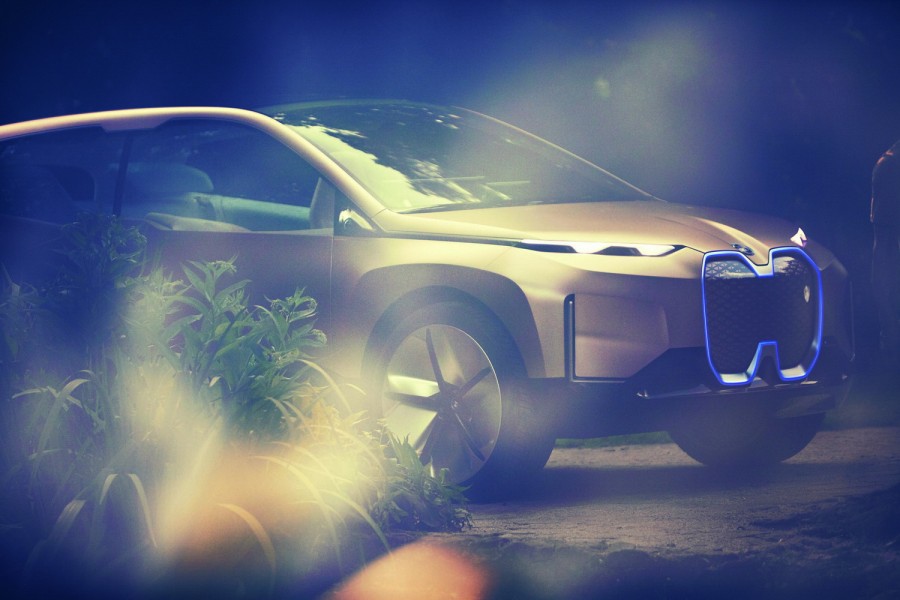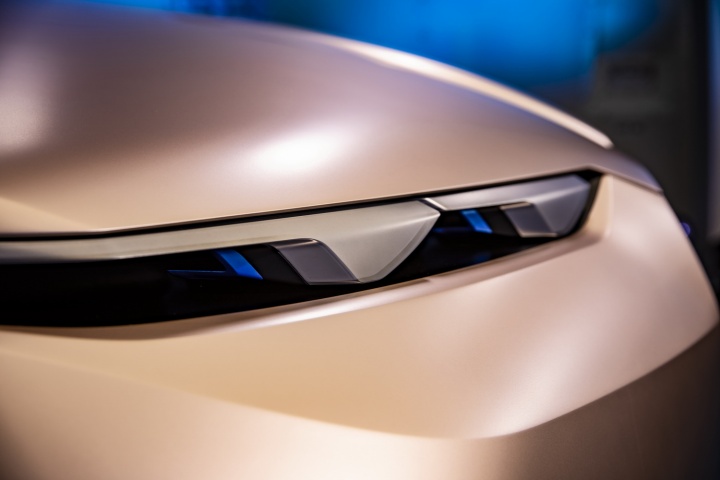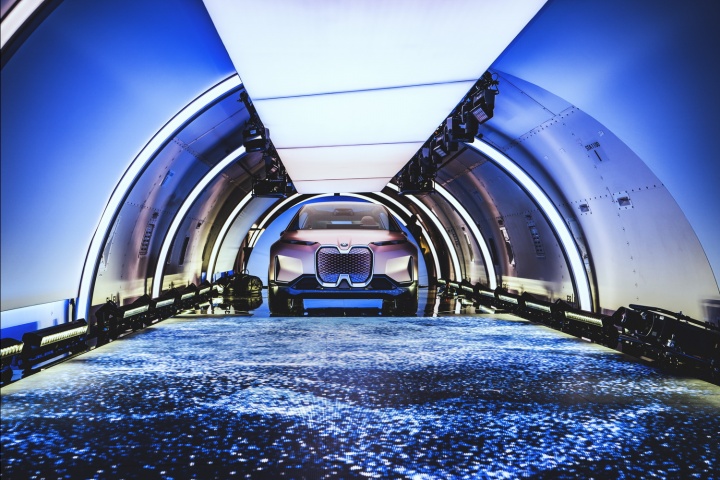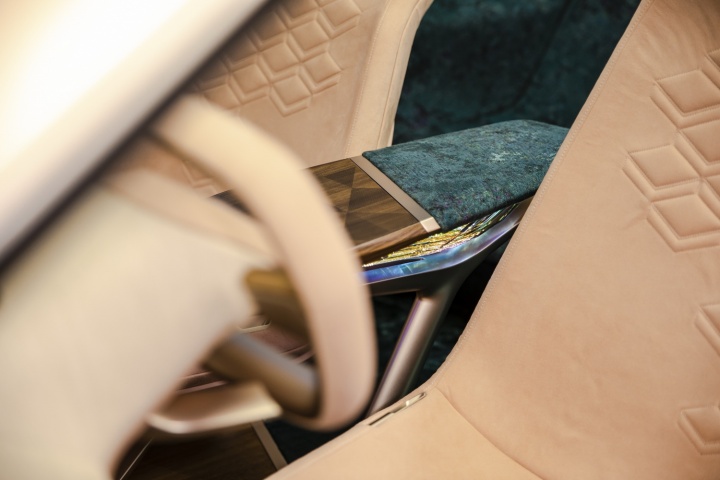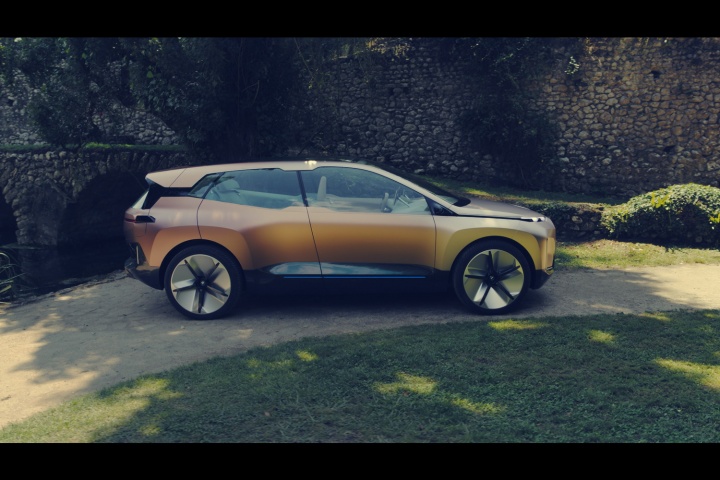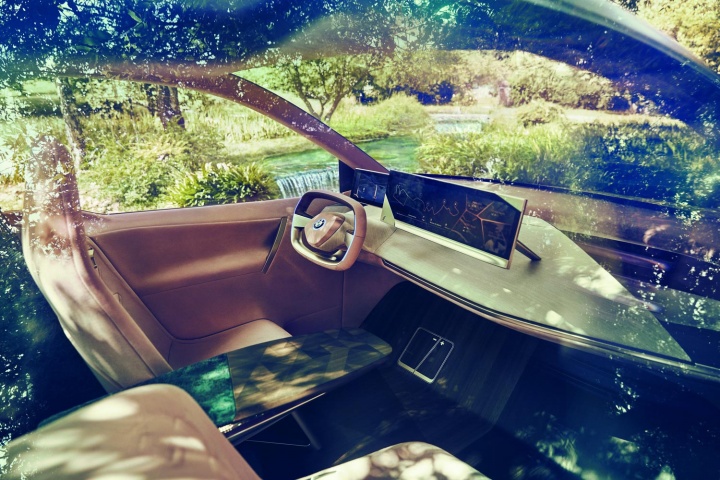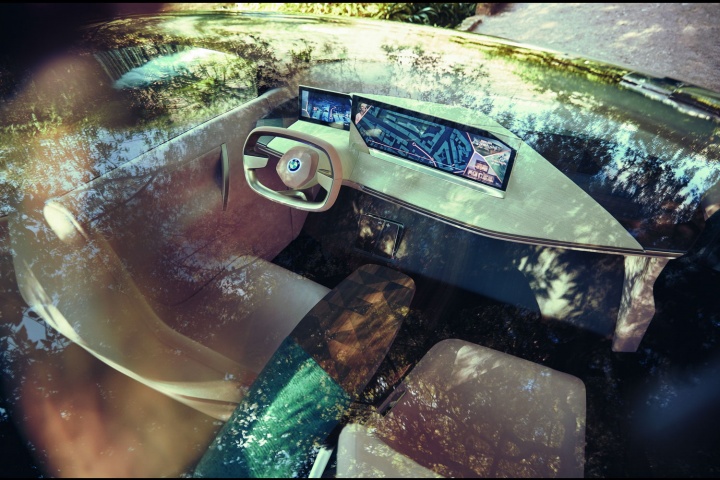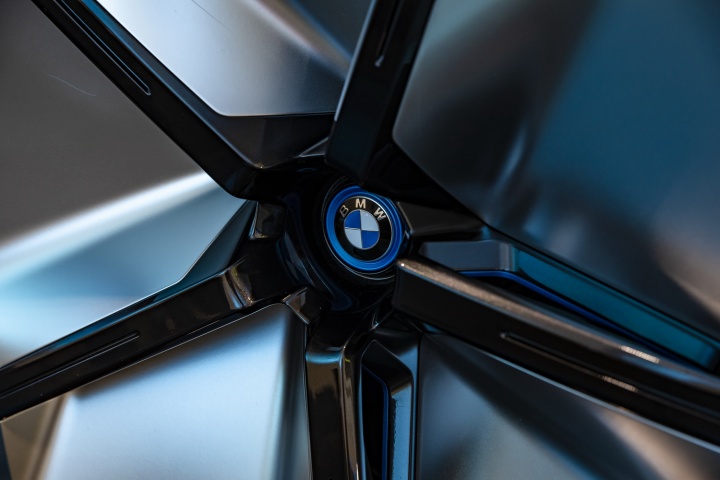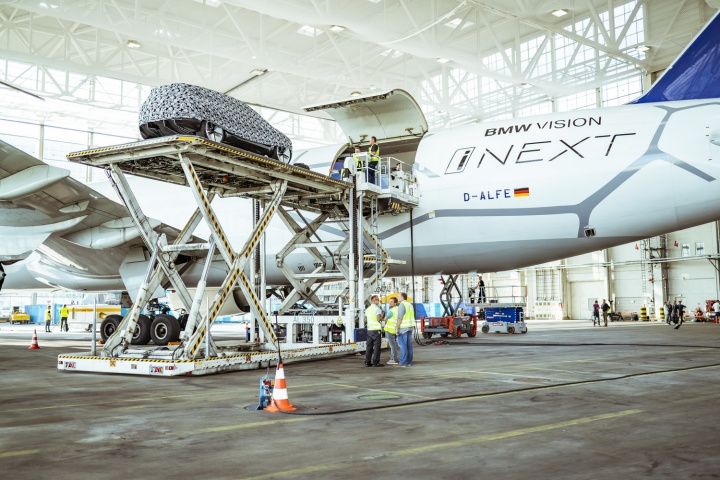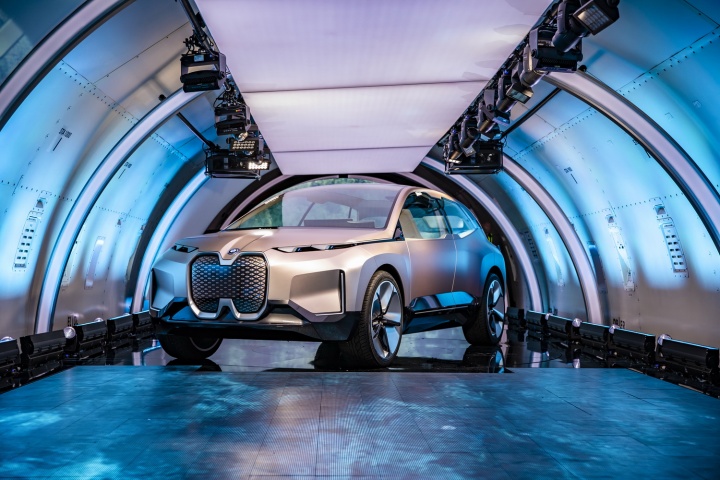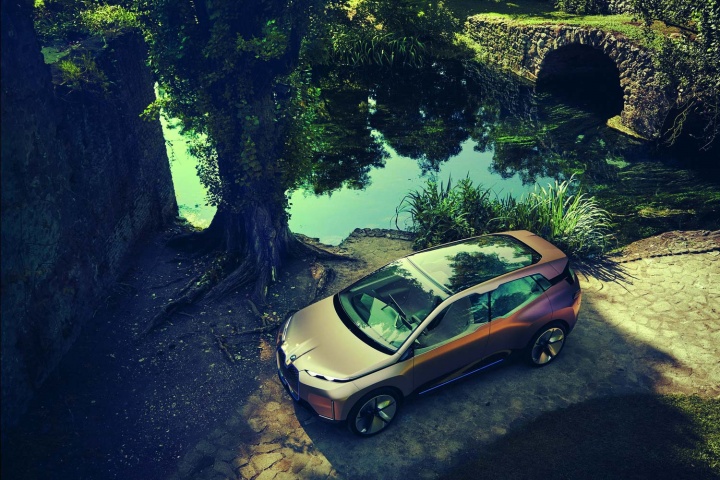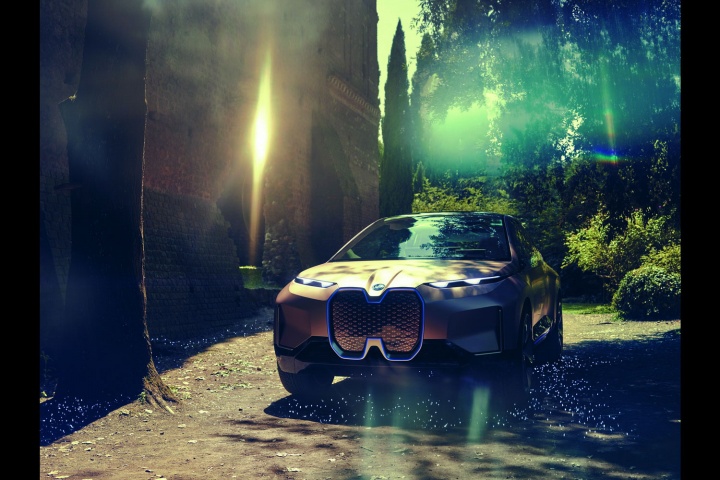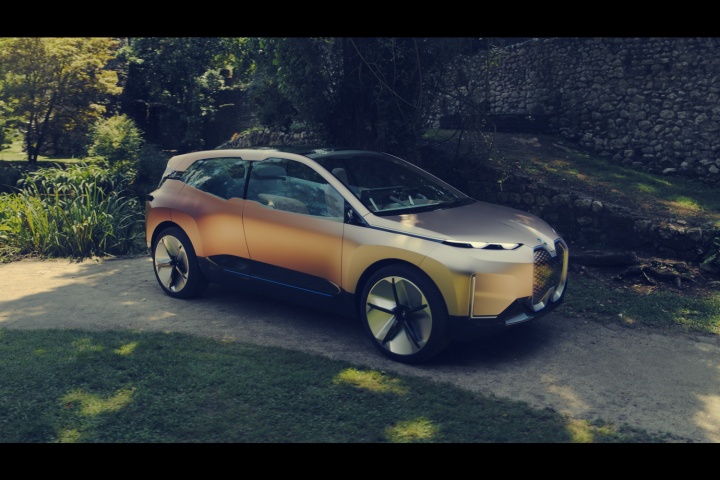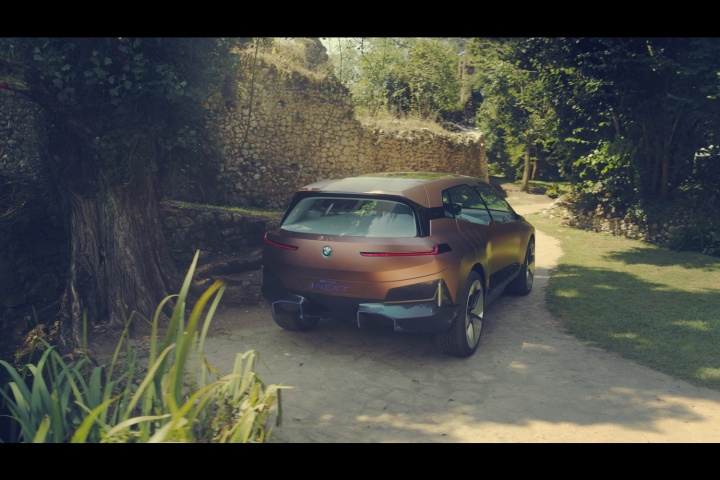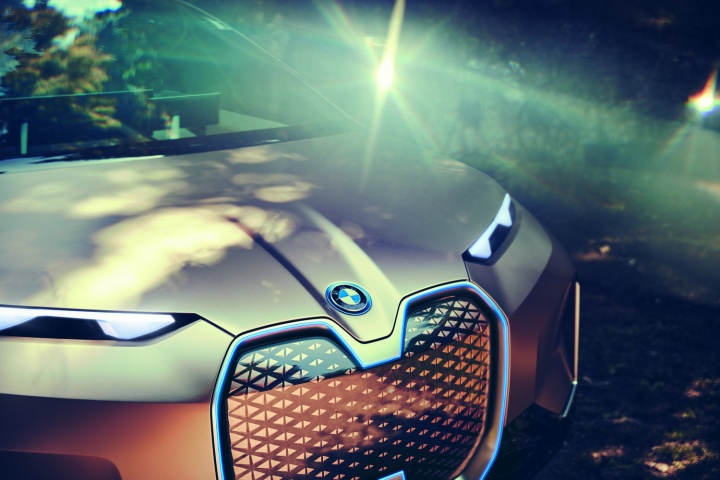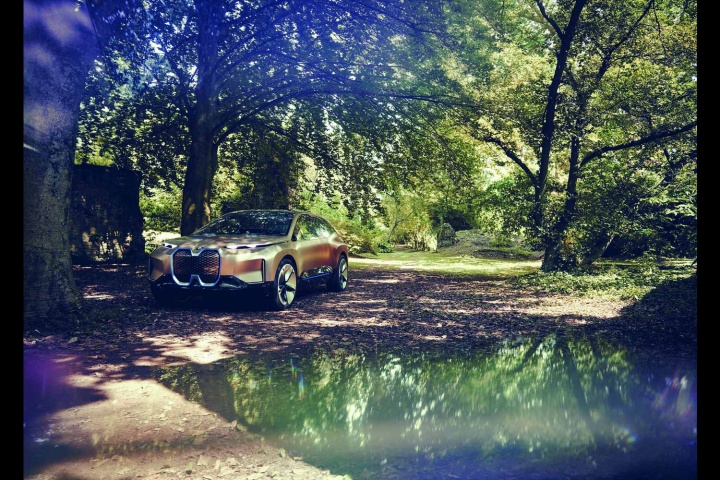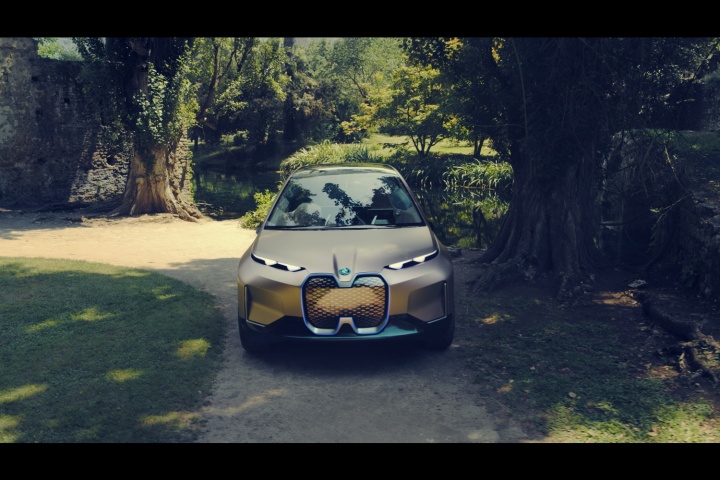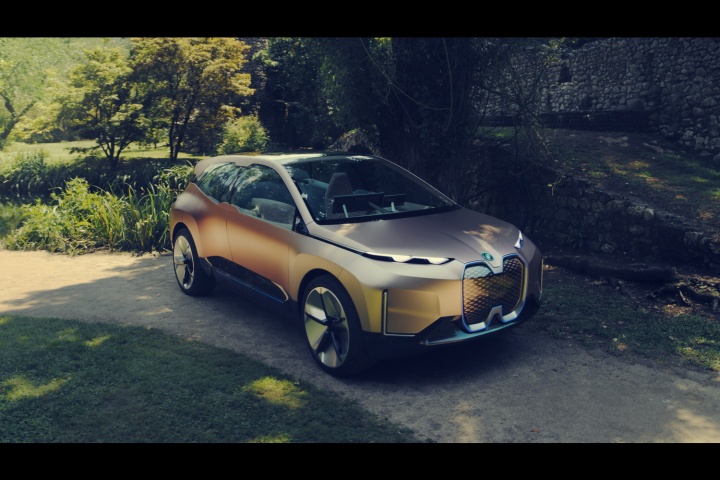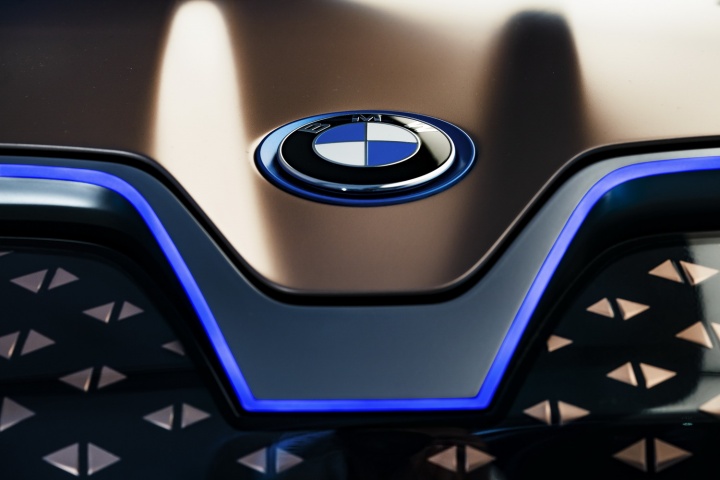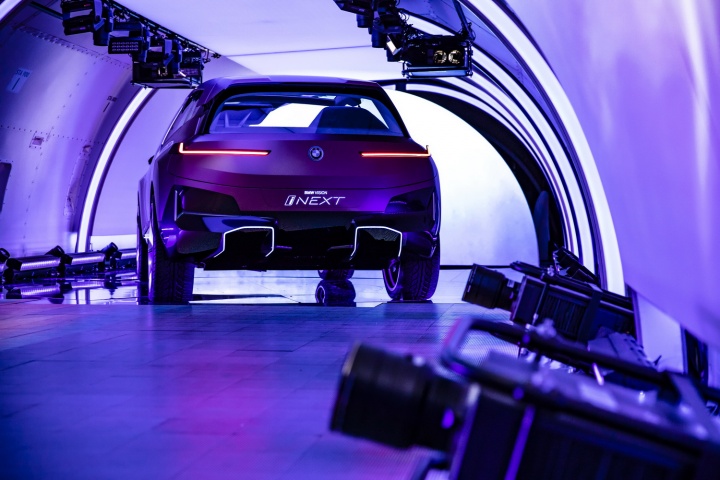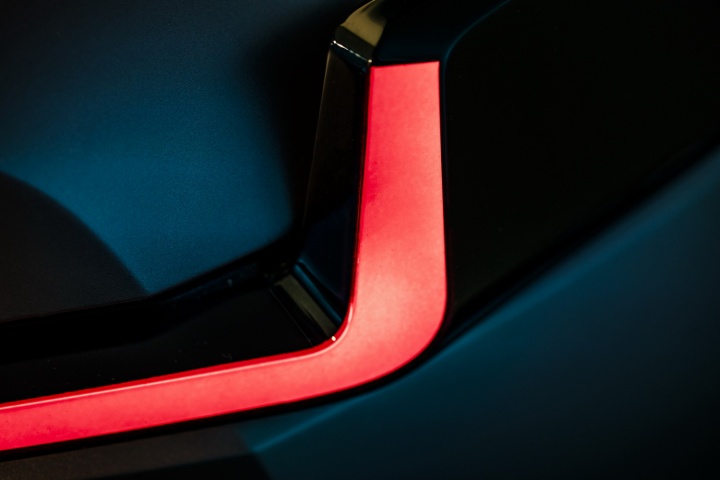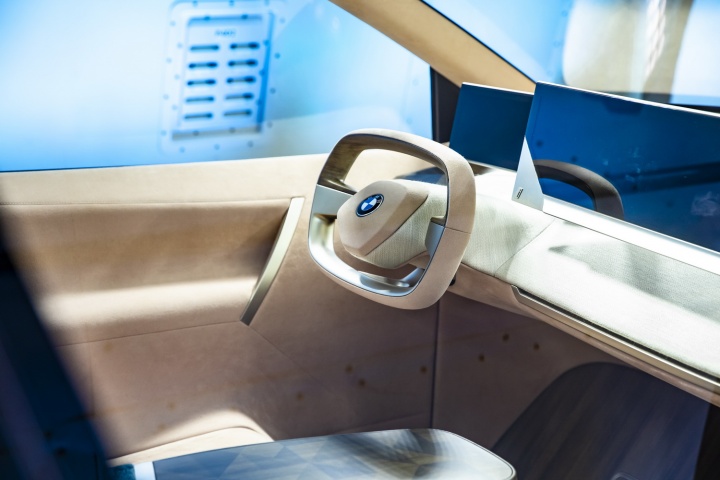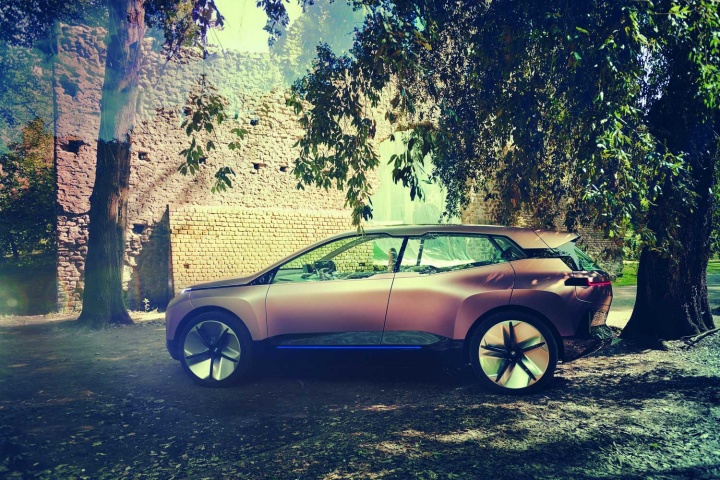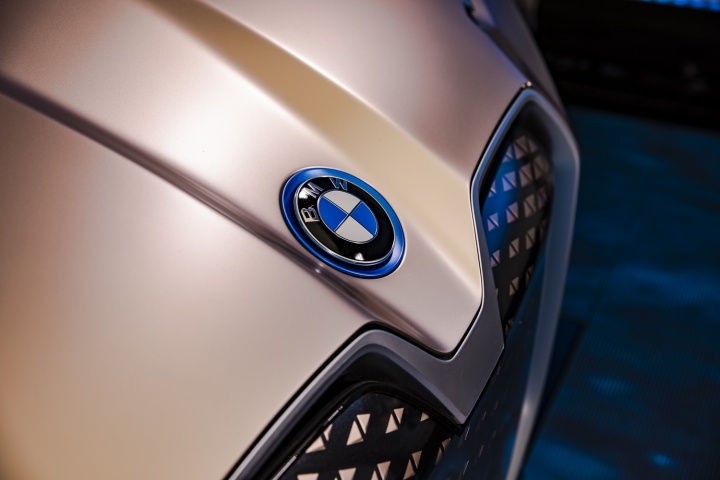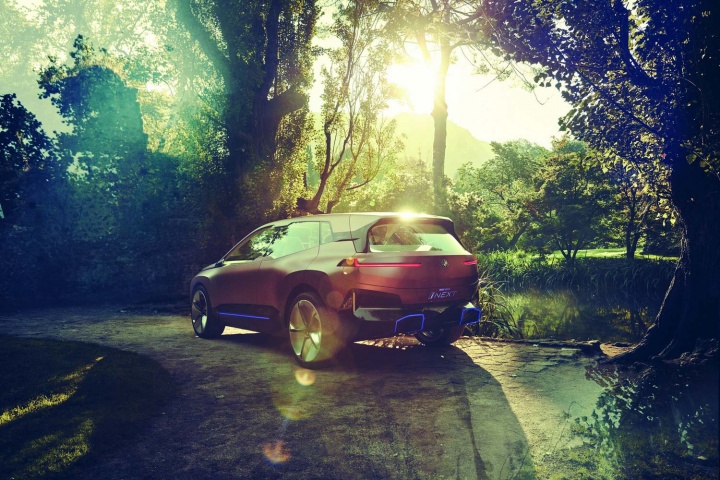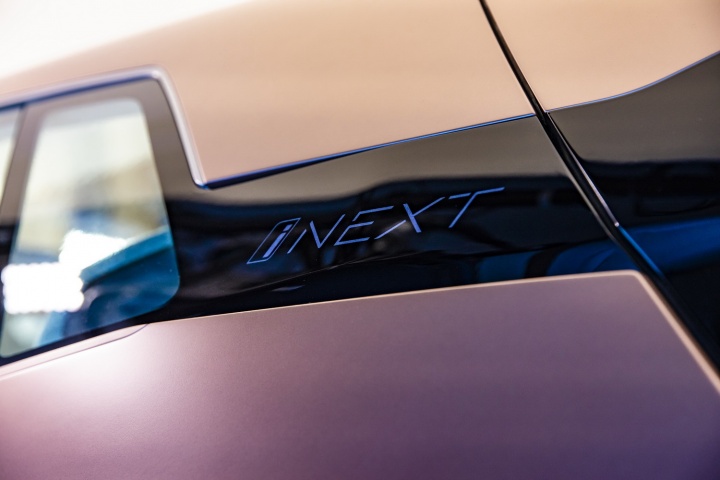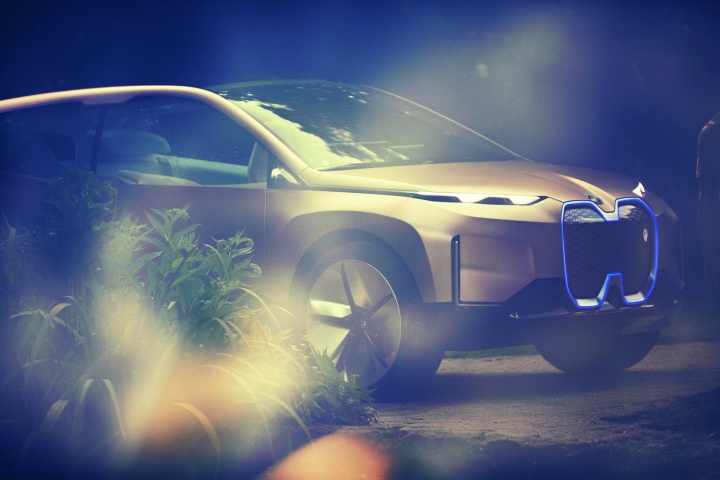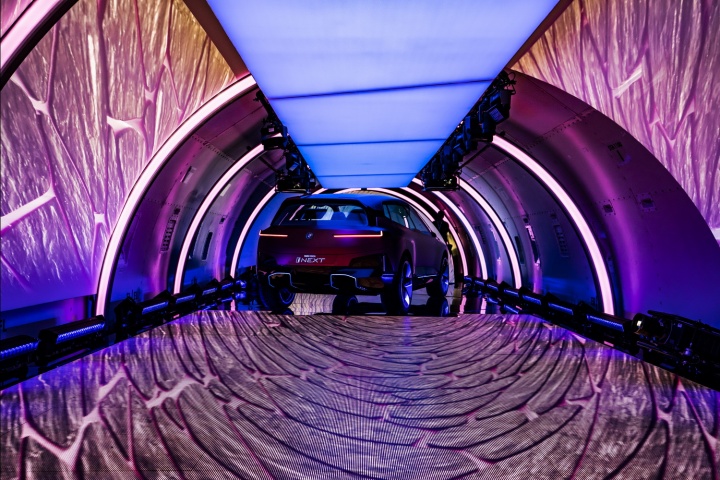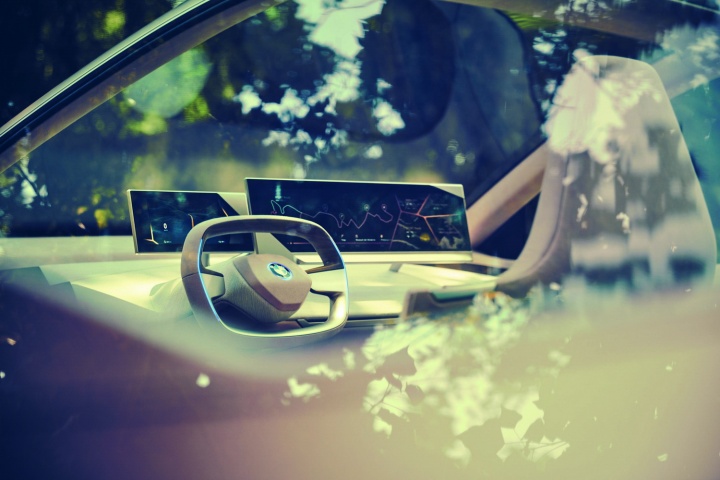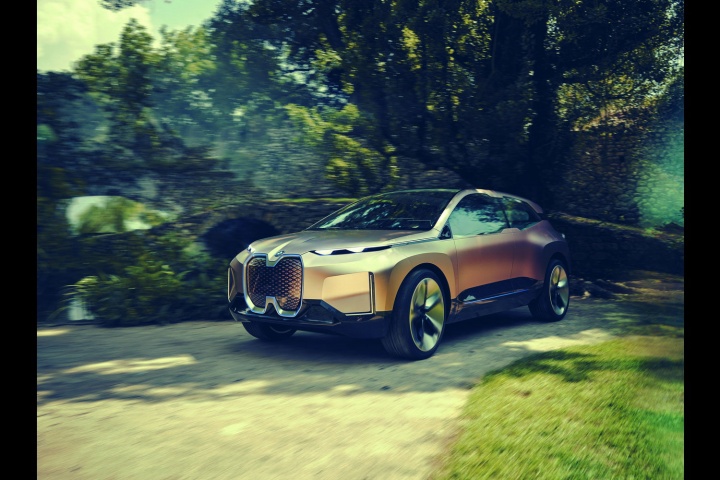What's the news?
There's something very strange about waiting to see an exciting new car revealed, while you're on board an aeroplane. We're in the belly of a Lufthansa Boeing 777 cargofreighter, which is standing on the apron at Munich airport as the sun slowly sets on an autumnal Sunday. In front of us is an array of LED lighting and illuminated floor pads, forming a display area that's about five metres long and which terminates in a semi-circular panel that is blocking out the starring vehicle, which is currently secreted away behind it.
But for all the fancy light shows obfuscating the surroundings and the sharp-suited, smiling BMW representatives on hand to make you concentrate firmly on what you're supposed to be doing (notebook at the ready, it's time for some very shaky shorthand to be scrawled down at a furious pace...), the display area cannot hide the curvature of the Boeing's fuselage. And there's something rather perverse about waiting to see the introduction of a planet-saving, zero-emissions electric vehicle (EV) while ensconced within a human-made machine that consumes a simply vast amount of aviation fuel in order to get about the globe.
Ah, but there's a reason the car we're here to see is on a Boeing 777, of all planes - it's because this is the most fuel-efficient, long-haul freighter plane in the world. And, not only that, but after we and a handful of other journalists have seen the car here in Munich, then all the displays on board will be broken down, packed away... and then the plane, complete with car in its hold, will take off - to jet to New York, then San Francisco and finally Beijing, where this same process of revealing the BMW Vision iNext to the world will take place in front of small groups of journalists.
Yes, this is the next phase in BMW's i-project revolution, which - believe it or not - is now more than a decade old. Oh, it's not that the superb i3 battery-electric vehicle (BEV) or the jaw-dropping i8 plug-in hybrid arrived in 2007; they actually turned up in 2013 and 2014, respectively. But, incredibly, the idea for a whole sub-brand of the German marque, a sub-brand which focused on electricity, began 11 years ago.
And now we're at 'i', version 2.0. But back to the Boeing. After a short presentation, the light shows kick off and then a video commences. It's the usual stuff - impossibly beautiful people, shown briefly and usually in slow motion, with lots of lens flare overlaying the whole thing: a guy with raffishly unkempt hair, his face upturned to the sky with his eyes closed in satisfaction; the back of a woman in sparkling water, swishing her arms slowly in the current; a blonde girl in a sun-dappled forest, the wind tousling her hair; and a studious-looking man in a black polo neck and deceptively simple yet no doubt terrifically expensive glasses, in an achingly cool, top-floor city apartment at night, checking things on his tablet and looking generally quite important. All these things are supposed to get you into the mindset of the customer demographic of the iNext, the hip and young people who are absolutely, 100 per cent going to buy this thing in years to come. According to BMW.
Then, the video starts to show the car, obliquely at first; glimpses of its wheel here, a smidge of its front wing there. Before the camera finally focuses square-on to the nose of the BMW, still silhouetted... and then the large, semi-circular panel descends, and the lights come up on the real thing. And... wow. You have to draw breath. Because the Vision iNext is... somewhat challenging in the facial features department. There has been a progression in size of BMW kidney grilles over the years, to the point that they're simply gargantuan on the impending X7 flagship SUV. But even those nostrils don't match the one-piece appendage on the front of the iNext.
The kidneys are vertical now, and conjoined. And they're about the size of football pitch. OK, that's an exaggeration, but you get the picture. Framed by a quartet of very small LED lights, it gives the iNext a frontal appearance that's not a million miles away from an Angry Birds boss pig, something that might at least detract from the dead-on rear view of the Ford GT, of which there are several memes online making the same link. Also, these items are not strictly 'grilles' any more, as there is no need for engine cooling on the iNext - it's a pure EV. So, the kidneys instead house all the camera and sensor systems required to make the BMW Level 5 autonomous.
Yes, like so many concept cars that are future-gazing these days, the Vision iNext is a fully autonomous vehicle with an interior modelled on a sumptuous lounge. You might also have noticed that this machine is an SUV with a classic two-box profile, long wheelbase, short overhangs, high-riding stance. It has always been supposed that the next BMW i-car would be an SUV of some sort, people hypothesising it would be branded i5. Well, here's the confirmation of such an electric vehicle from Munich, although BMW will not confirm what badge it would be sold under, this far out from its slated showroom appearance.
We also don't know a huge amount about motive power, beyond the fact that it will be a full BEV (and not a PHEV, like the i8) and - as confirmed by Klaus Fröhlich, member of the board of management of BMW AG responsible for Development - that it will have "two different battery sizes and two different performance specifications", the more powerful version with the bigger battery capable of "comfortably more than 600km electric range, WLTP" and also a 0-100km/h run with a time that is "three-point-something seconds, not starting with a four."
It's therefore safe to assume that these electric motors, which must be delivering something like 370kW (500hp) and more to propel a big, battery-powered SUV forward with that sort of alacrity, will be mounted fore and aft to deliver a form of four-wheel drive. BMW also says that it will use learnings from the i3 and i8 production processes, most notably relating to the extensive use of carbon-fibre, aluminium and high-strength steel in the body, to keep the weight off the iNext's futuristic frame.
Which means we're back to the aesthetics and the technology fitted to this plane-bound concept. On the former score, once you've got past the shock of the iNext's startling face, it's actually quite an attractive thing to behold. The concept car is finished in natty paintwork that starts off copper at the front of the BMW and segues neatly to rosé by the time you've reached the rear, some five metres later. On a whopping set of aerodynamically optimised 24-inch alloys, the iNext certainly has presence - and no small degree of 'wow' factor when the doors (which open in opposing directions) swing out with just a sweeping hand gesture near their pillarless join. The sides of the iNext are refreshingly free from numerous swage lines, instead going for a softer, smoother look, and round the back there's an enormous diffuser (that for a moment tricks you into thinking the car has exhausts, for no good reason) that promotes optimum airflow, while slender light clusters and a spoiler lend the BMW EV SUV a sporty air.
Inside, the ethos here is 'Shy Tech'. A cursory glance around the cabin reveals a complete absence of buttons and other switchgear. That's because everything on the hyper-connected, autonomous BMW is controlled by hand gestures, some very impressive control surfaces (which we'll come back to in a moment) and an Intelligent Personal Assistant, which switches on when you say 'hey BMW...' while seated inside the cabin. To that end, there are just two big screens on the dashboard - and, somewhat surprisingly (and hearteningly), a steering wheel. Intriguingly, while BMW says this fully autonomous car (which proves its worth by driving itself off its display stand midway through a BMW executive's presentation, silently moving a few feet forwards and then applying a bit of left lock to sidle up beside the happily oblivious human spokesperson) will be ready for market in just three years' time, Fröhlich is pulling no punches about what you'll actually get in the showrooms: "Automated driving is a huge challenge and it will not happen in all areas of the world at the same time. There are a lot of legal and regulatory hurdles to clear before autonomous driving happens all over the world, so we are predicting more like Level 3 autonomy being widely available in 2021."
The pleasing part comes when he adds: "The joy of driving remains core to BMW - we will not be replacing the human driver with autonomous driving; rather, our AI technology will only add to the experience for end users." So that means you can put the iNext into either Boost or Ease, the former mode sliding the steering wheel towards its driver and folding two little pedals out of the floor so that the human can take control - if they so wish. This, Fröhlich explains, is because the iNext is about satisfying what BMW predicts consumer demand wants from personal transportation in 2021, rather than forcing a self-driving-car philosophy onto a populace that might not desire such a thing.
Back with the Shy Tech (a name which doesn't sound too great when you say it quickly and tail off the second syllable...), it reaches its apogee in that rear bench. Up front, iNext's two occupants luxuriate in chairs that actually merge into the door cards themselves, allowing for a wider range of seating positions (including a full-on slouch, if you so desire), and then the head restraints can fold down backwards to allow for easier conversation with people in the rear.
Not that rear-seat passengers will want to talk to you, because they'll be too busy playing with the fabric of their bench, which is actually a control interface for the connectivity and infotainment systems. No joke. BMW thinks that surfaces of wood and cloth can become control pads. To demonstrate, the rear bench of the iNext features Jacquard cloth under which is the hardware to control music functions. By drawing the symbol of a musical note on a set area of the bench's fabric, the music comes on. And then swipe functions on the seat skip through songs, circles make the tunes louder or softer as required, and three fingers pressed down pauses the beat, then resumes playback when you do it again. LEDs under the cloth trace a light path after your finger strokes, while all of the control symbols for the various systems can be set to whatever pattern you desire, so this technology automatically becomes even cooler and more sci-fi than it already is.
BMW says the idea with this fabric is that the user can move the control interface area wherever it is needed on the bench as required, meaning that you won't have to rigidly sit in one place because the volume controls are right next to your left thigh, for instance. Or, indeed, because you want to nod off in the back of the iNext and lying on the bench might inadvertently turn all the music on to VERY LOUD otherwise. Seriously, this alone is one of the most jaw-dropping things about the iNext and we can't wait to see it make the grade in a production car.
Suitably impressed by the iNext, save for its challenging front-end appearance, the good news is that this isn't some far-flung concept-car idea that will never see the sodium-light of day in a BMW showroom; the German manufacturer pledges that it will have it in production by 2021 at Plant Dingolfing, 100km north-east of Munich. How much of what we saw at this presentation actually makes the final cut remains to be seen, as the interior seat fixtures don't look like they'd meet any sort of existing crash-safety legislation, but by the same token this Boeing-bound concept is clearly not a million miles away from reality.
And BMW, like many manufacturers, places great store in the electric revolution. Citing the iNext as the 'blueprint of its future strategy', already the consumer change is gathering pace. In 2017, BMW sold 100,000 electrified vehicles around the world, and this year it's on target to sell 140,000 units or thereabouts. By 2020, it reckons it will have half a million electric or part-electric cars on the collective roads of planet Earth, and by 2025 the BMW Group will have 25 models with electrified drive systems, 12 of which will be pure EVs. The iNext is clearly crucial to this forthcoming development phase of the great i-project venture, and it promises to be a stunning machine once it launches. Just don't expect to see many of them inside the guts of a Boeing 777 in future, though... because self-driving cars aren't really needed at a 36,000ft cruising altitude. Well, not yet, at any rate.

